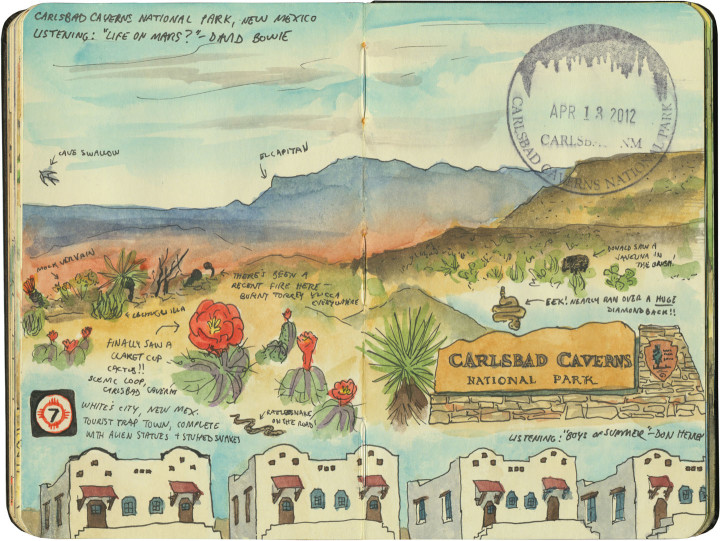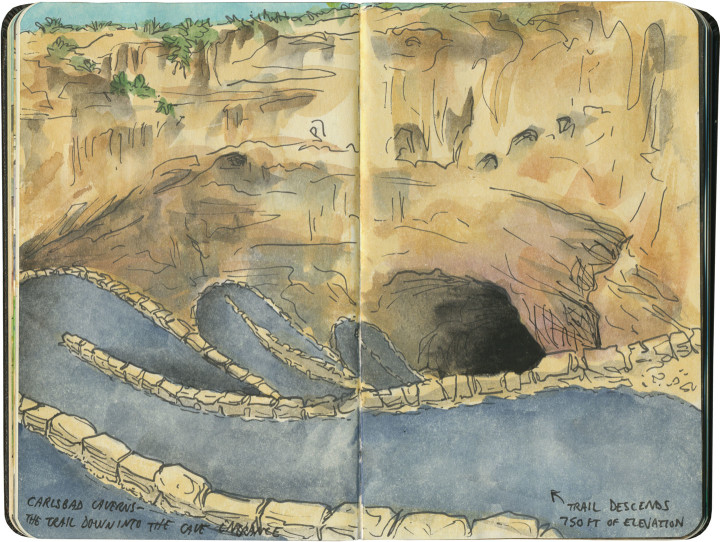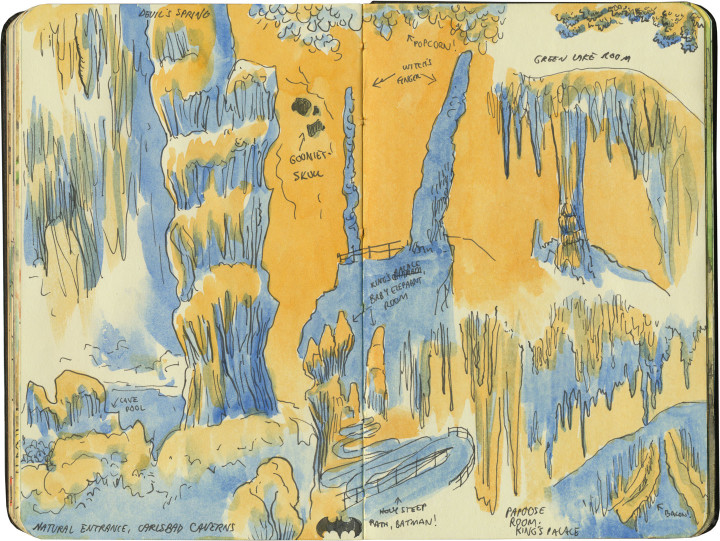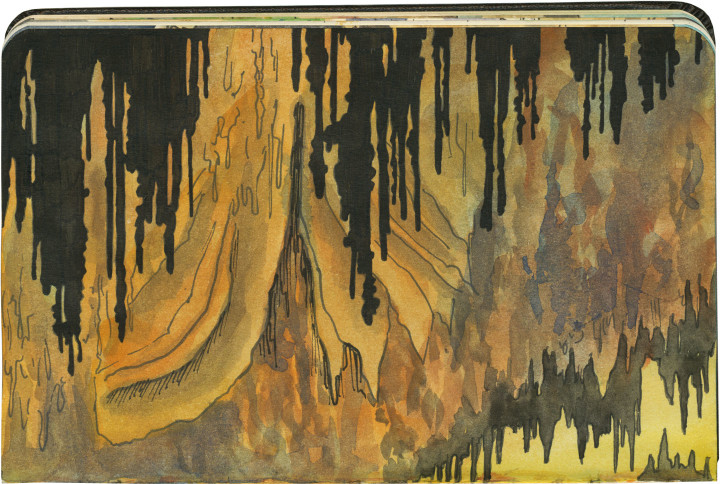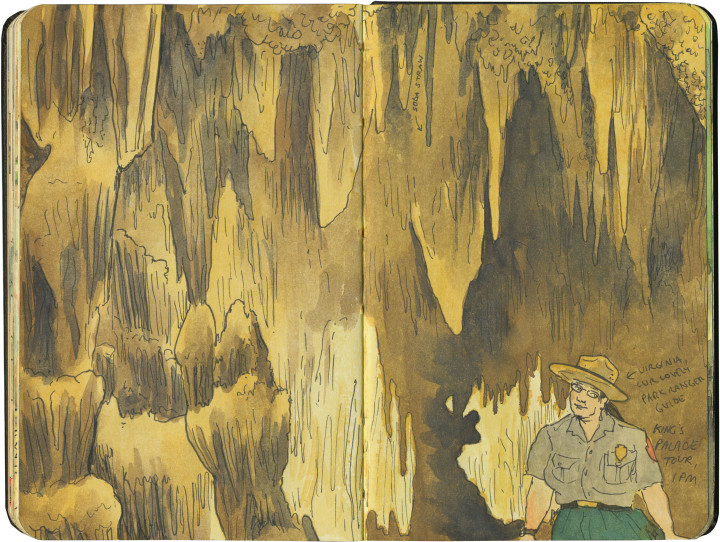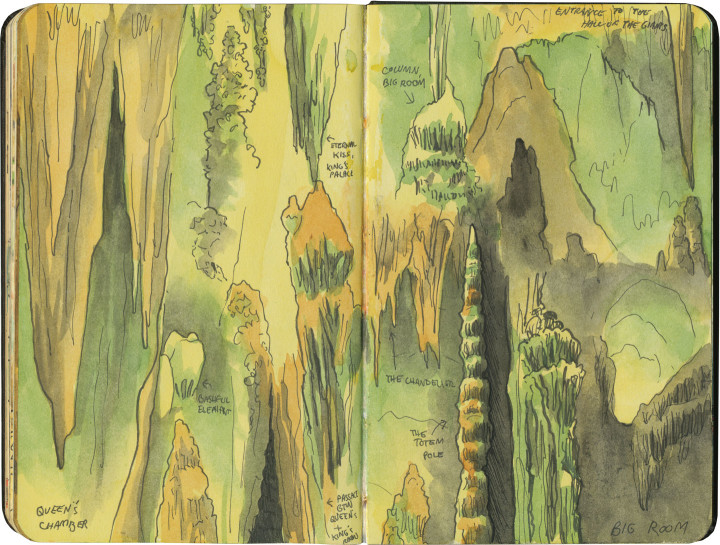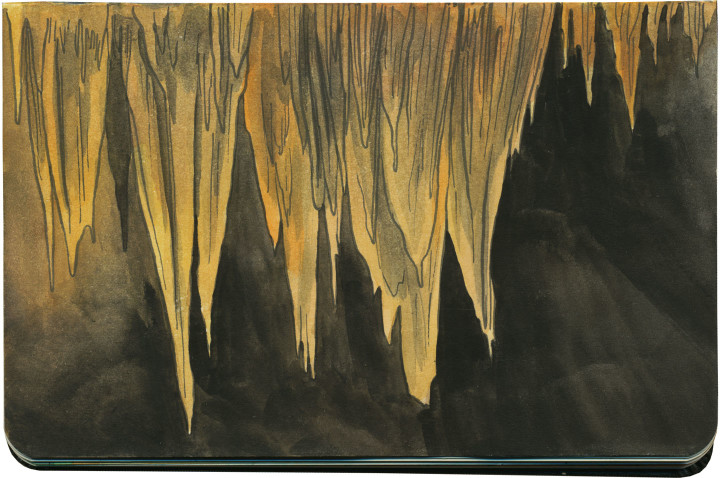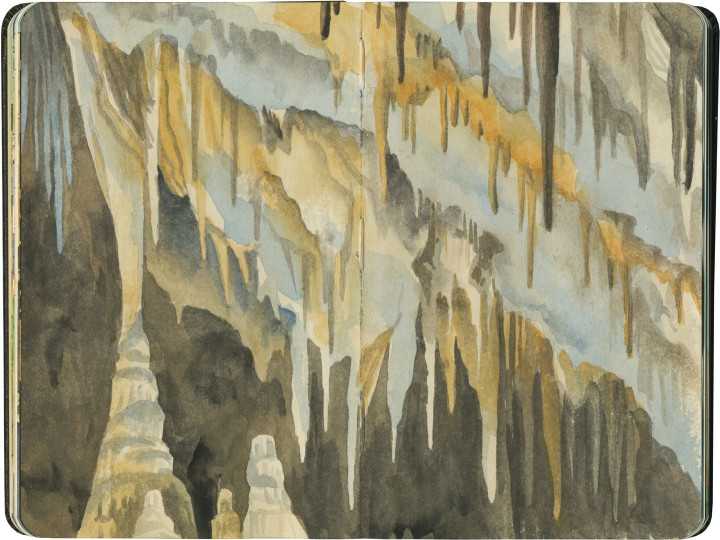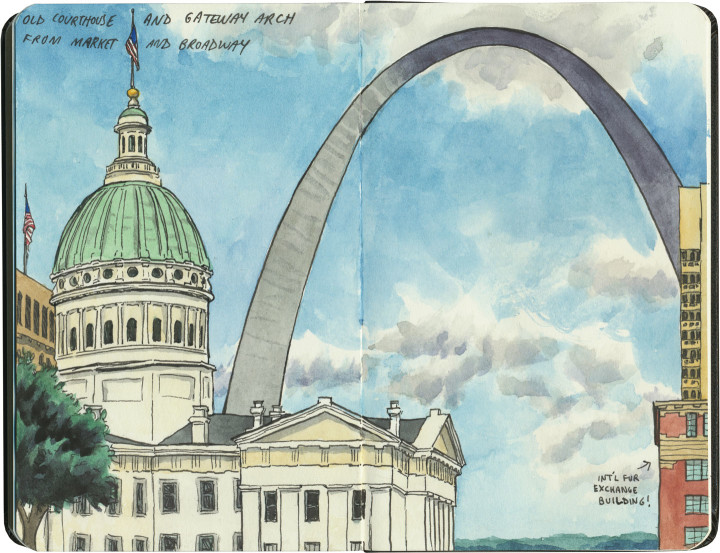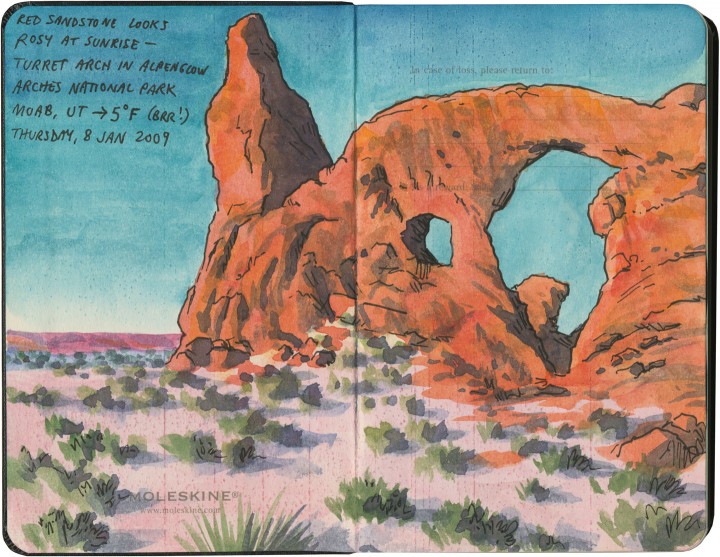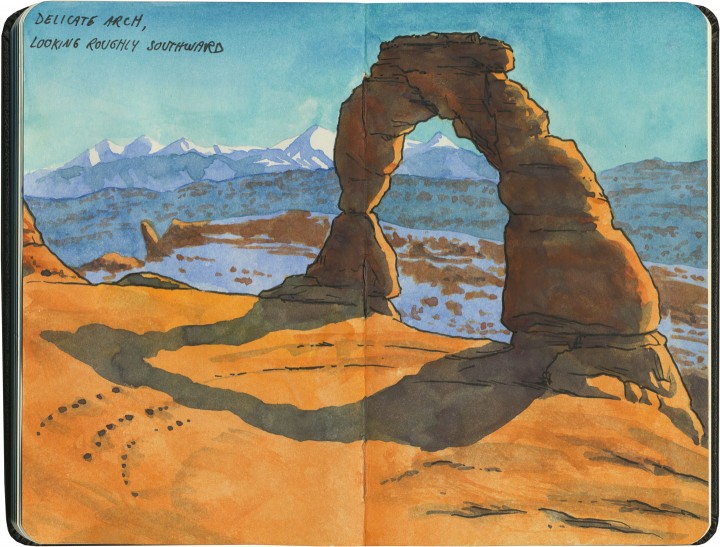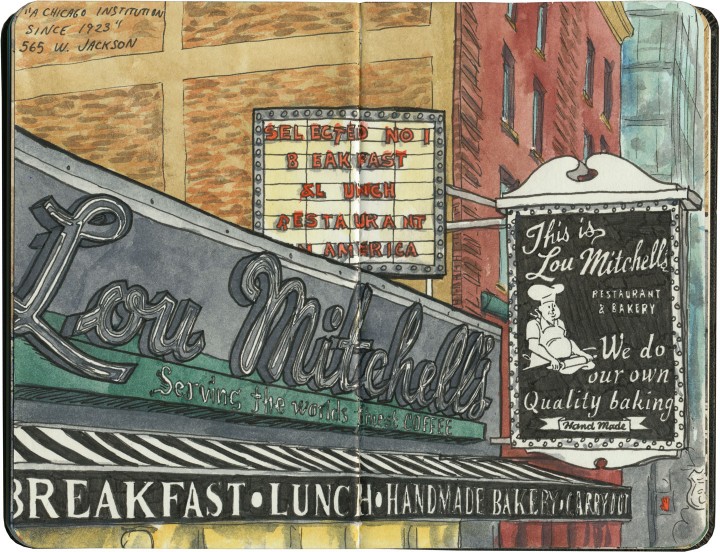Well, I might not have had the chance to tour Meramec Caverns, but I got to tour the everloving snot out of Carlsbad Caverns—and I have the bursting sketchbook to prove it.
We were there in the “wrong” season—that is, not the time of year for bat-watching. But it didn’t matter: I figured the cave itself would be plenty enough to keep my pen busy.
Boy howdy, was that an understatement. I forgot all about the steep hike as soon as we got underground, because my brain immediately broke. At least, the part of my brain used to drawing recognizable things broke. The under-used bit that loves abstraction came roaring to life. It was like a Seussian paradise down there.
I think anyone wanting to teach design should send their students to Carlsbad Caverns. Around every curve waits a lesson in composition, or silhouette, or texture, or complex linework, or negative space.
Of course, it’s far too dark in the cave to break out the old watercolors, so I had to do that part later, but I had no problem making drawing after quick drawing on the spot, while the friendly park ranger told us interesting stories (have I mentioned that I love park rangers?)
And the limestone formations lent themselves so well to drawing! The way water carved each stalactite into linear shapes, or formed ripples in the surface of rock—it was like reinterpreting a line drawing that already existed in three dimensions.
Of course, none of this drawing (nor any of the dramatic photographs you see of the place) would be possible without the work the National Park Service did to show the caverns in their best light—quite literally! Almost as much as the rock formations themselves, what really struck me was how incredible the lighting work is in there, and how the mechanics of it all are nearly invisible. Without such brilliant lighting design, each spectacular formation would be lost in a sea of overwhelming texture. The park goes way beyond any museum, and ventures into the realm of art: if nature is already perfect on its own here, it takes a masterpiece of illumination to make humans appreciate it all.
